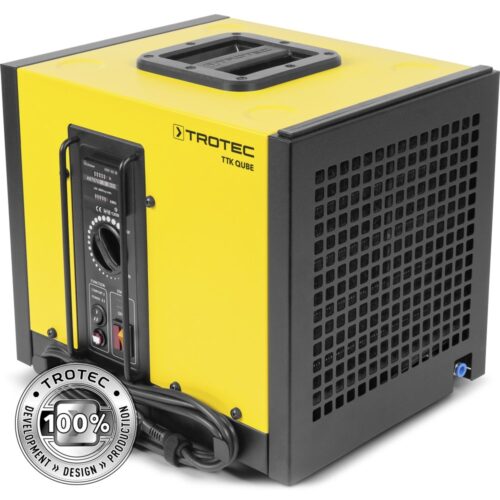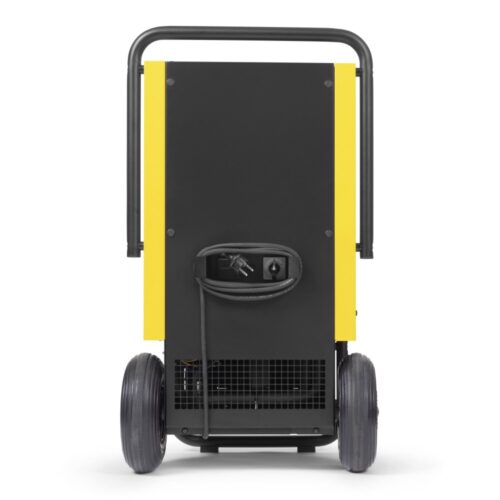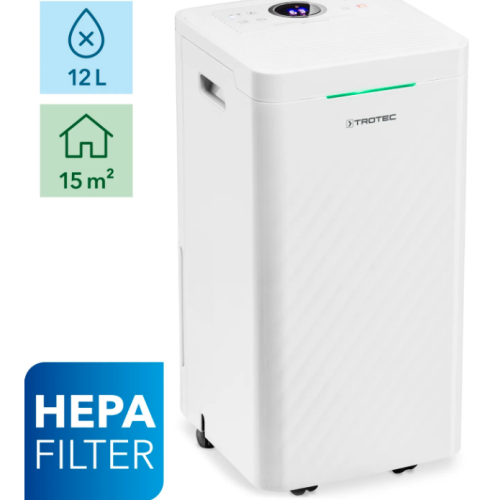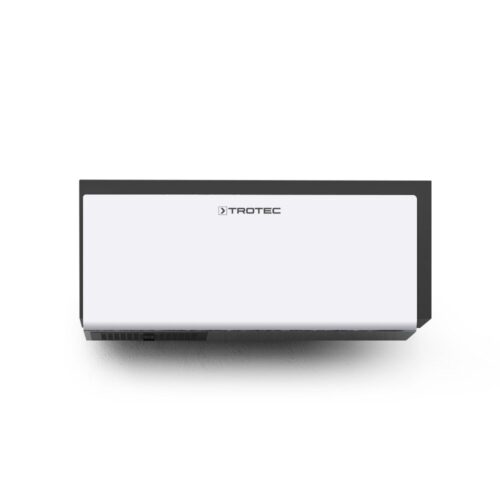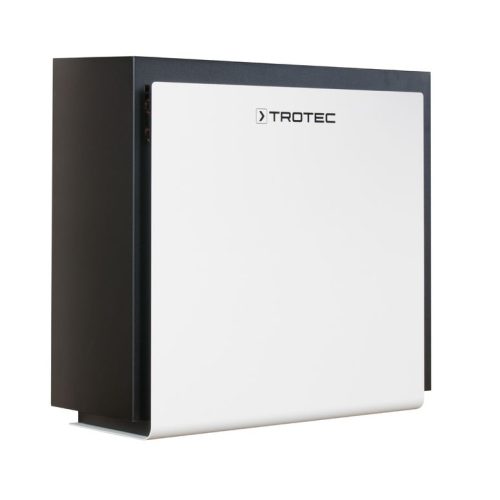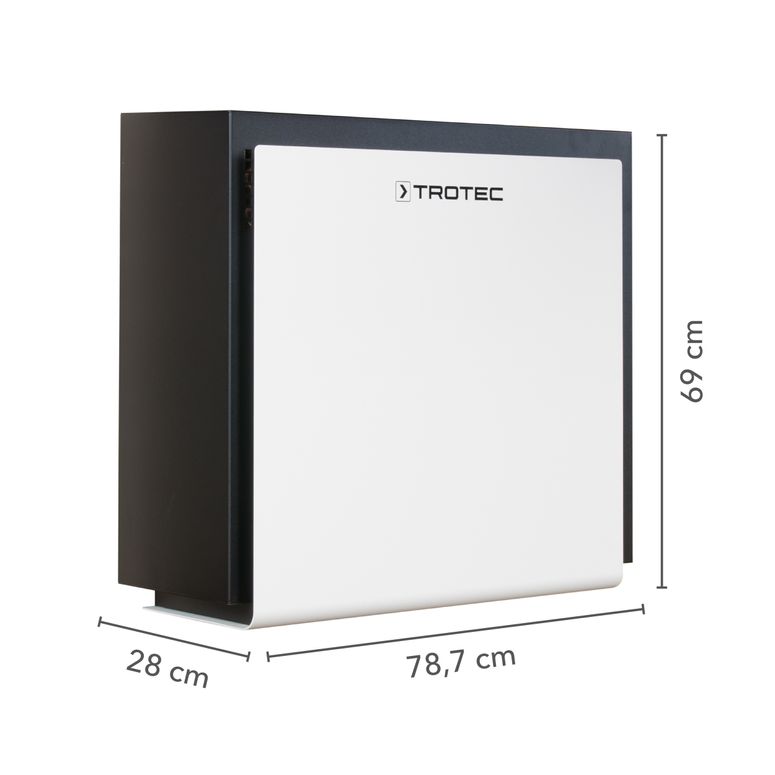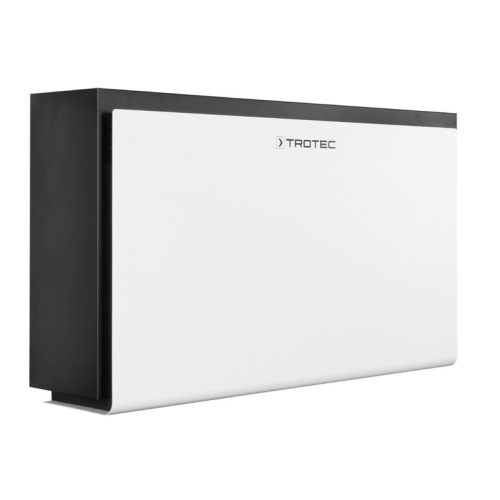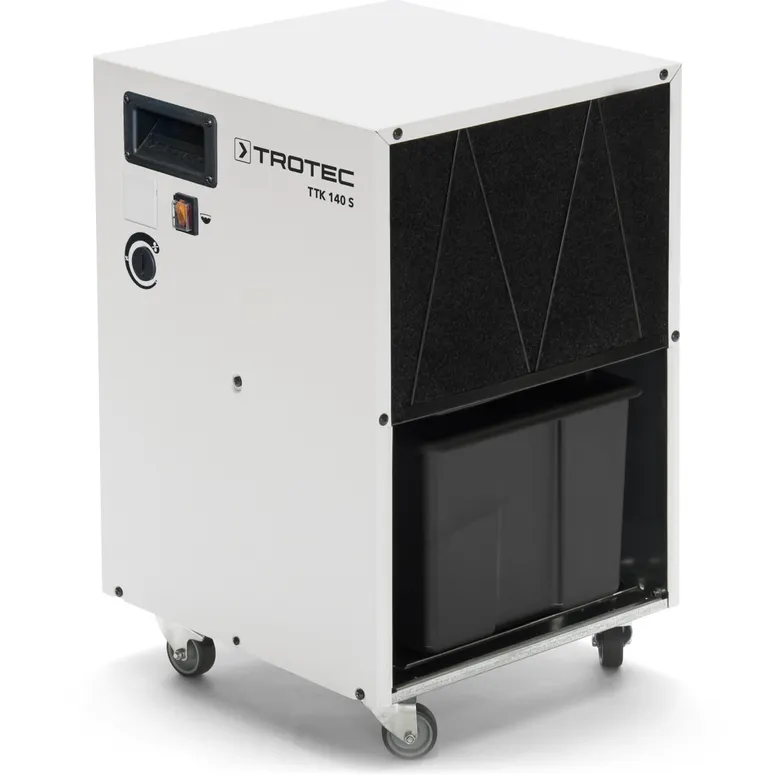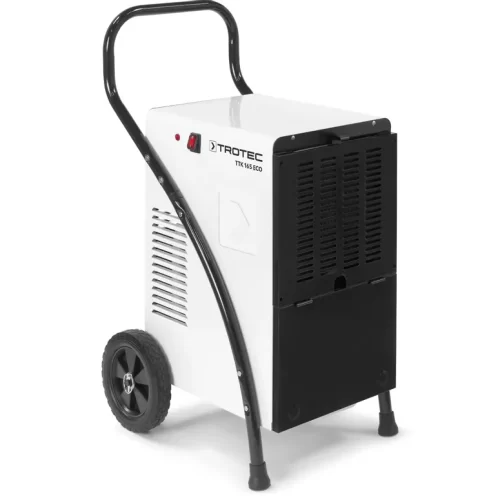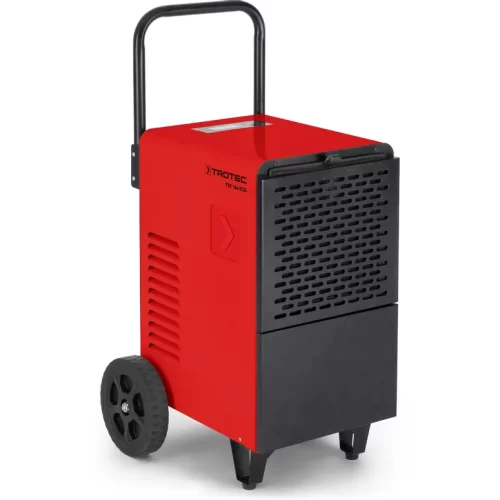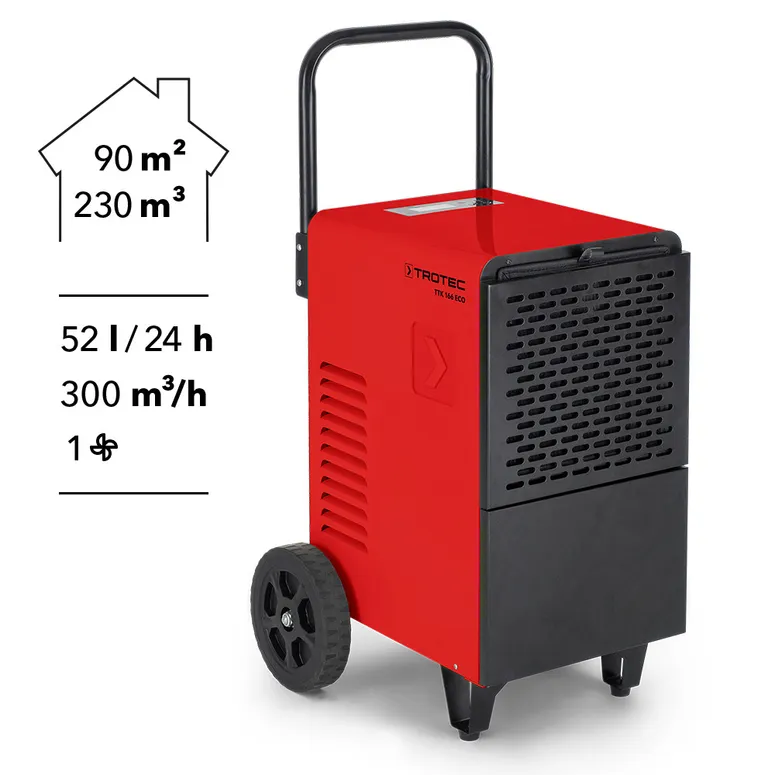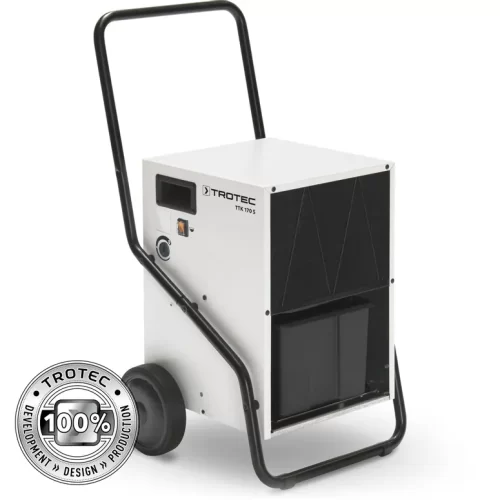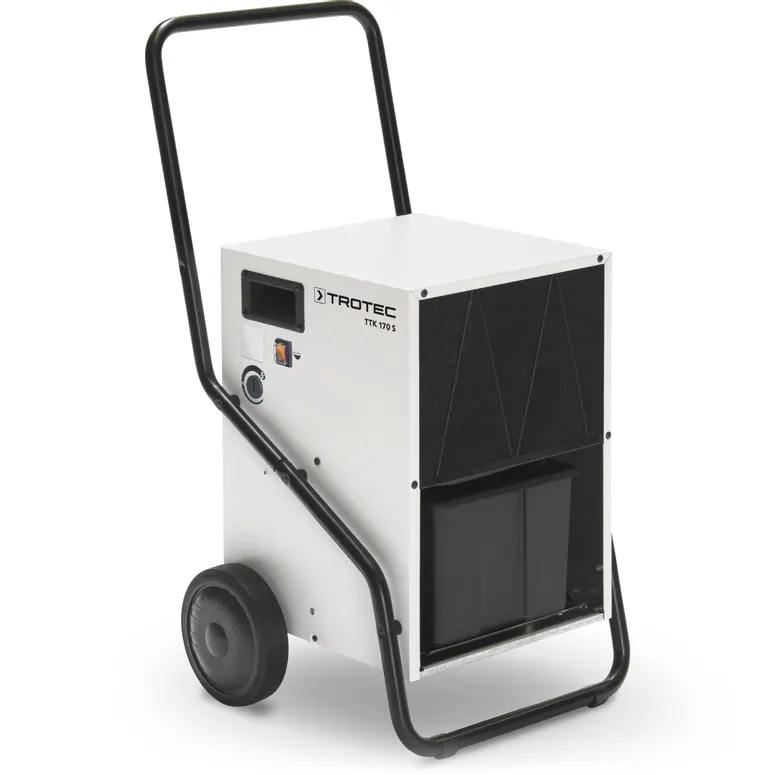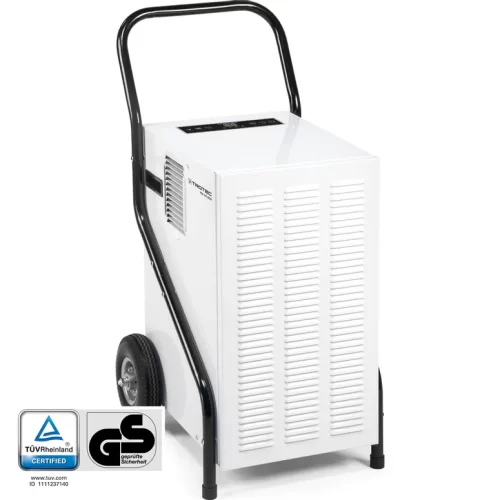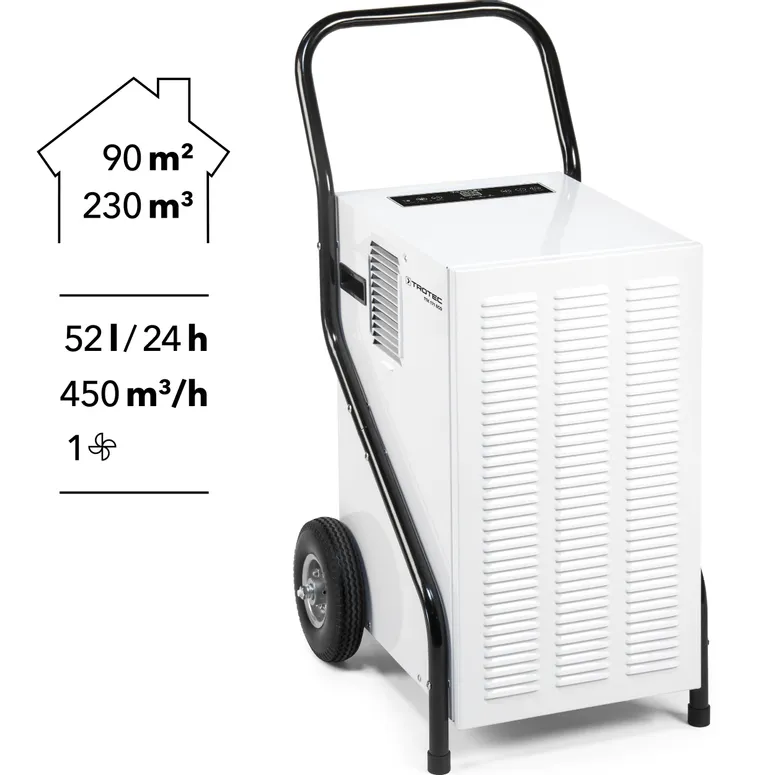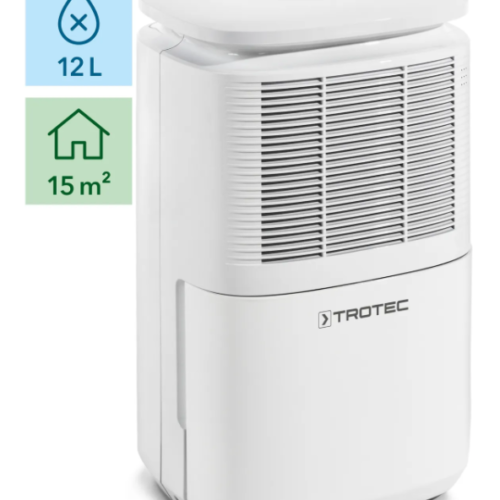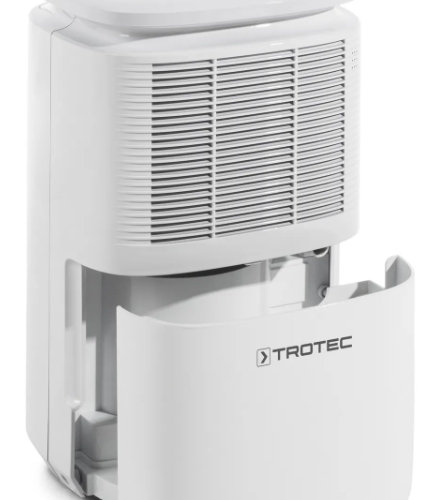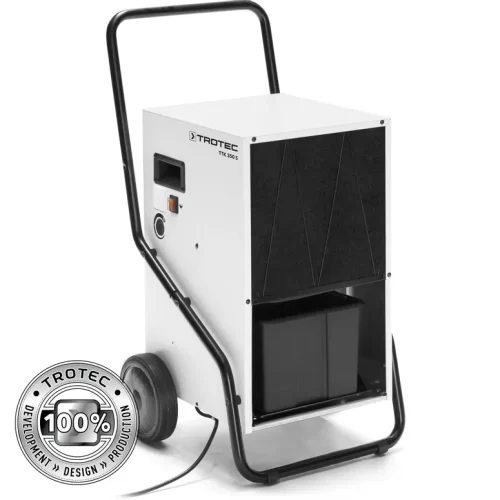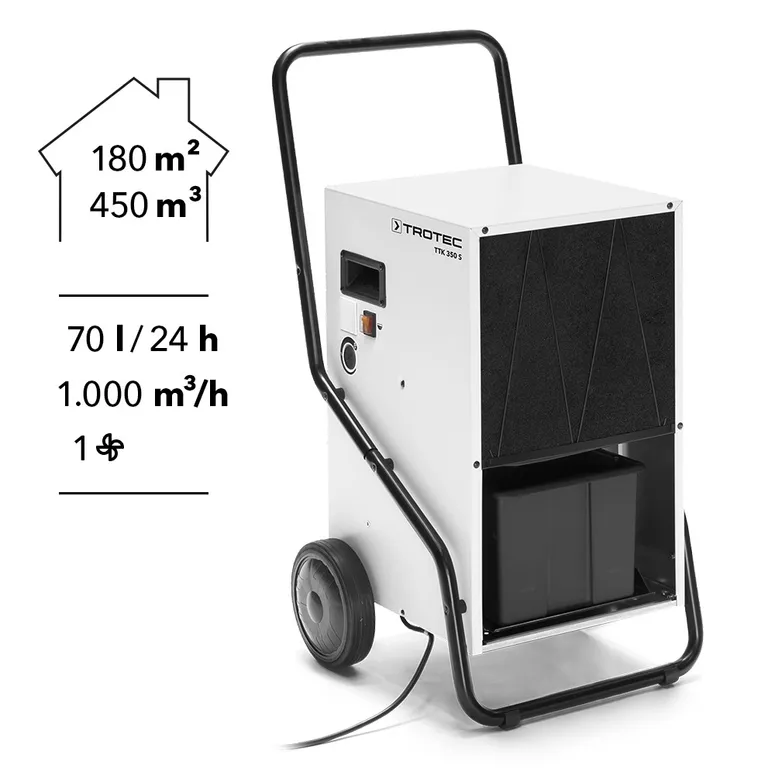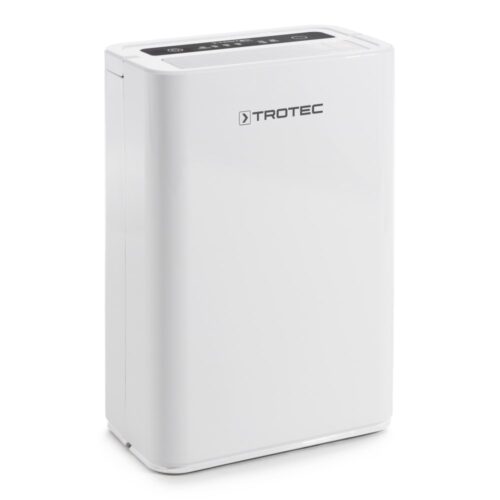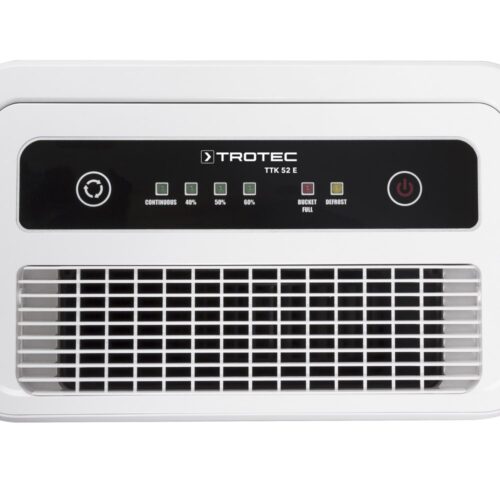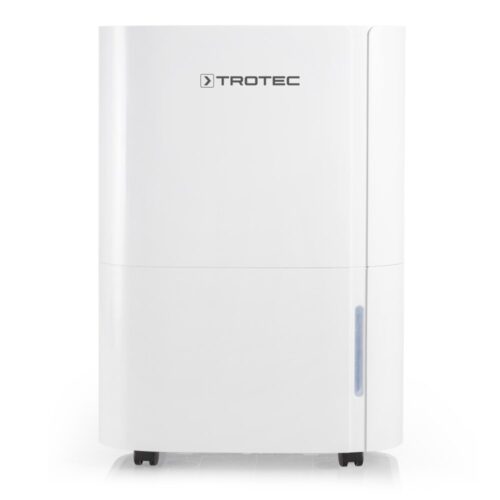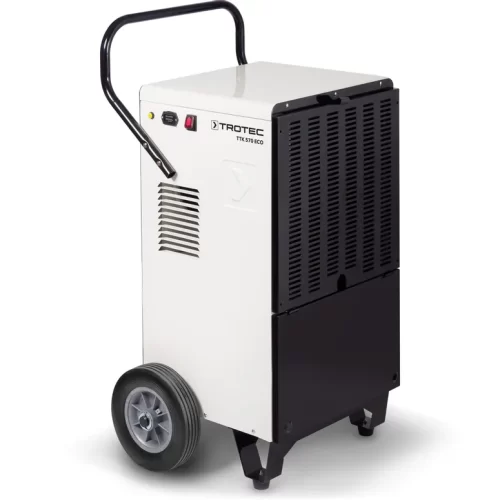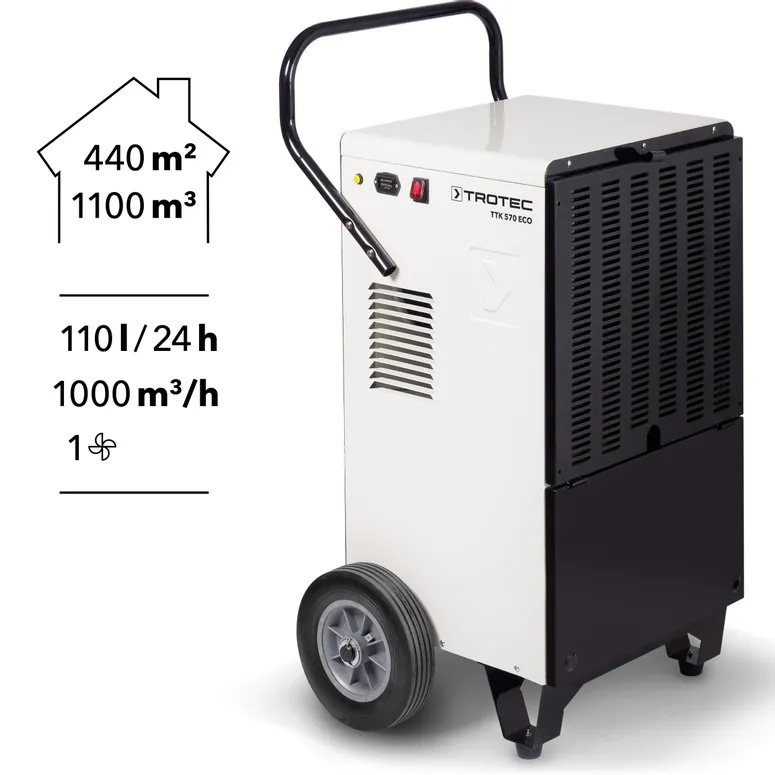A dehumidifier is an electrical appliance that reduces the level of humidity in the air. It works by removing excess moisture from the air and collecting it in a tank or draining it through a hose. A dehumidifier can be used in any indoor space, including homes, offices, basements, and crawl spaces.
Showing 1–18 of 23 results
Dehumidifiers FAQs
Dehumidifiers work by using a refrigeration cycle to remove moisture from the air. When humid air is drawn into the unit, it passes over a cold coil, which causes the moisture in the air to condense into water droplets. The water is then collected in a reservoir or drained through a hose. The drier air is then released back into the room.
The type of dehumidifier that is best for you depends on your specific needs and the conditions of your indoor space.
Types of Dehumidifiers
There are three main types of dehumidifiers: refrigerant, desiccant, and whole-house dehumidifiers.
Refrigerant Dehumidifiers
Refrigerant dehumidifiers work by using a refrigeration cycle to cool and condense moisture in the air. They are the most common type of dehumidifier and are suitable for use in most indoor spaces.
Desiccant Dehumidifiers
Desiccant dehumidifiers use a desiccant material, such as silica gel or zeolite, to absorb moisture from the air. They are more effective than refrigerant dehumidifiers in very low temperatures or very high humidity conditions.
Whole-House Dehumidifiers
Whole-house dehumidifiers are installed into the HVAC system and can dehumidify the entire house. They are the most expensive type of dehumidifier but can be more effective and energy-efficient than using multiple portable dehumidifiers.
If you live in a humid climate or have experienced dampness in your home, you may have considered purchasing a dehumidifier. But did you know that using a dehumidifier can offer many benefits beyond just reducing moisture levels?
- Preventing Mould and Mildew Growth
One of the most significant benefits of using a dehumidifier is that it can prevent mould and mildew growth in your home. Mould and mildew thrive in damp environments, so by reducing the humidity levels, you can stop these harmful substances from spreading.
- Reducing Allergies and Respiratory Problems
High humidity levels can exacerbate allergies and respiratory problems such as asthma. By using a dehumidifier to maintain a dry environment, you can reduce the risk of allergic reactions and respiratory issues.
- Protecting Your Home and Belongings
Excess humidity can cause damage to your home and belongings. Mold and mildew can ruin furniture, clothes, and other household items, while high humidity levels can warp wood and damage electronics. By using a dehumidifier, you can protect your home and belongings from these harmful effects.
- Improving Comfort and Energy Efficiency
High humidity levels can make your home feel uncomfortable and stuffy, leading to increased energy costs as you try to cool down the air. By using a dehumidifier to maintain a comfortable humidity level, you can reduce your energy bills and improve your overall comfort.
Dehumidifiers are best suited for environments with high levels of humidity, such as basements, laundry rooms, bathrooms, and kitchens. These areas often have poor ventilation, which can lead to a build up of moisture in the air.
Dehumidifiers can also be useful in areas that are prone to flooding or water damage, as they can help to remove excess moisture from the air and prevent mould and mildew growth. Additionally, dehumidifiers can be helpful in areas with high levels of allergens, such as dust mites and mould spores, as they can reduce the humidity levels that these allergens thrive in.
Overall, any environment that experiences high levels of humidity or moisture can benefit from the use of a dehumidifier.
Choosing the right size dehumidifier for your space is important to ensure that it can effectively remove excess moisture from the air. Here are some factors to consider when determining the appropriate size dehumidifier for your space:
- Room Size:
The size of the room where you will be using the dehumidifier is a key factor in determining the appropriate size. Measure the square footage of the room and look for a dehumidifier that is rated for that size.
- Humidity Level:
The level of humidity in the room also plays a role in determining the size of the dehumidifier. If the humidity level is consistently high, you may need a larger dehumidifier to effectively remove moisture from the air.
- Air Flow:
The amount of air flow in the room can also impact the effectiveness of the dehumidifier. If the room has poor air circulation, you may need a larger dehumidifier to compensate.
- Usage:
Consider how often the dehumidifier will be used and for how long. If it will be used frequently, a larger dehumidifier may be necessary to ensure it can keep up with demand.
- Budget:
Dehumidifiers come in a range of sizes and prices, so consider your budget when choosing the appropriate size. While larger dehumidifiers may be more expensive, they may be more effective at removing moisture from the air.
In general, a small dehumidifier is suitable for rooms up to 300 square feet, while a medium dehumidifier can handle rooms up to 500 square feet. For larger rooms, a large dehumidifier may be necessary. It’s important to choose a dehumidifier that is rated for the size of your space to ensure it can effectively remove excess moisture from the air.
There are several types of dehumidifiers available, each with its own unique features and benefits. The main types of dehumidifiers include:
- Refrigerant dehumidifiers:
These dehumidifiers use a refrigeration system to cool and condense the air, collecting moisture in a tank or through a drainage hose. They are best suited for use in moderate to high humidity environments and can operate at temperatures above freezing.
- Desiccant dehumidifiers:
These dehumidifiers use a desiccant material, such as silica gel or zeolite, to absorb moisture from the air. The moisture is then removed by heating the material, which releases the water vapor. They are best suited for use in low temperature or low humidity environments, and can operate at temperatures below freezing.
- Whole-house dehumidifiers:
These dehumidifiers are installed as part of the HVAC system and are designed to regulate humidity levels throughout the entire home. They are typically more expensive than portable dehumidifiers, but offer greater control and efficiency.
- Mini dehumidifiers:
These dehumidifiers are small and portable, designed for use in small spaces such as closets, bathrooms, and storage areas. They are typically less expensive than larger dehumidifiers, but have a smaller capacity and may need to be emptied more frequently.
- Portable dehumidifiers
Portable dehumidifiers are larger units that can be moved from room to room as needed. They are effective in removing large amounts of moisture from the air and can be used in a variety of settings. However, they can be quite heavy and may not be as easy to move around as mini dehumidifiers.
The main differences between these types of dehumidifiers are their capacity, efficiency, and operating temperature range. Refrigerant dehumidifiers are generally the most common and versatile type of dehumidifier, while desiccant dehumidifiers are better suited for low temperature or low humidity environments. Whole-house dehumidifiers are best suited for large homes with central HVAC systems, while mini dehumidifiers are ideal for small spaces or occasional use.
The noise level of a dehumidifier can vary depending on the make and model, as well as the specific settings and operating conditions. In general, portable dehumidifiers can produce anywhere from 40 to 60 decibels of noise, which is roughly equivalent to the sound level of a normal conversation or background music. Larger, whole-house dehumidifiers may produce slightly more noise due to their larger size and capacity.
However, many modern dehumidifiers are designed to operate quietly, with features such as noise-reducing fans and insulated compressor compartments. Some dehumidifiers also have adjustable fan speeds or night modes that can reduce noise levels during sleep or quiet times.
When choosing a dehumidifier, it is important to consider the noise level and choose a model that is appropriate for the intended use and environment. For example, if the dehumidifier will be used in a living area or bedroom, a quieter model may be preferable, while a louder model may be acceptable for use in a basement or storage area.
The amount of energy that a dehumidifier uses can vary depending on several factors, including the size and capacity of the unit, the humidity levels in the environment, and the specific settings and operating conditions. In general, portable dehumidifiers can consume anywhere from 300 to 800 watts of power per hour, while larger, whole-house dehumidifiers can consume several thousand watts of power.
However, many modern dehumidifiers are designed to be energy-efficient, with features such as automatic shut-off, adjustable fan speeds, and programmable settings that can help to reduce energy consumption.
When choosing a dehumidifier, it is important to consider the energy usage and choose a model that is appropriate for the intended use and environment. Factors such as the size of the room or area, the humidity levels, and the length of time the dehumidifier will be in use can all affect the energy consumption of the unit. Additionally, proper maintenance and cleaning of the dehumidifier can help to ensure optimal performance and energy efficiency over time.

